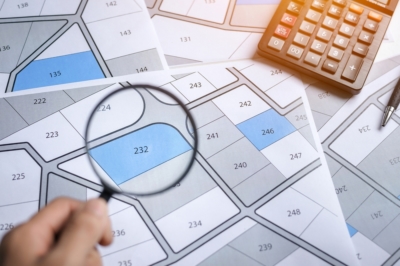Real estate is often touted to be the holy grail of investment vehicles. After all, land does not depreciate, and with a growing population but a limited supply of land, its value is sure to appreciate over time.
However, it’s not as simple as that. Numerous factors affect the value of a property, from its size, the nearby amenities, its design, and most importantly, its location. And not all locations are created equal. Factors like the number of transportation options and the proximity to business districts all contribute to a location’s desirability, and, thus, its value.
This article will go over the various factors that influence the price and value of a property in terms of its location.
1. Cost of Living
The cost of living refers to the amount needed to cover basic, day-to-day expenses like groceries, utilities, rent, and entertainment. Cities that are close to business districts, like Makati and BGC, typically have higher rent because of high demand, which increases the cost of living in those areas.
A location with a high cost of living is a two-edged sword; while a high cost of living indicates that the location is so desirable that it shoots up the price because of the demand, it can certainly turn off a lot of buyers who cannot afford to live there.
2. Foot Traffic
For commercial properties, foot traffic can be a significant factor in a property’s value. A high amount of foot traffic indicates the level of economic activity happening in and around the property’s location. Not only is it a good pull for companies who want to set up operations in the area but it can also be a good predictor of future infrastructure investments to accommodate the increasing number of people in the area.
3. Accessibility
If a location offers a high degree of accessibility, then it’s most likely considered a prime location and, thus, commands a higher price. Accessibility doesn’t just mean the property is near establishments for work and play.
For a property or location to be accessible, it has to be safely walkable, bikeable, and free from traffic jams. Moreover, the presence of infrastructures like highways and bridges makes a location desirable to buyers, which increases their value over less accessible places.
4. Transportation options
The presence of transportation hubs and public utility vehicle routes has a big effect on an area’s desirability. Having many transport options conveys the feeling of centrality to a place, where people can easily reach other areas from any point in the city.
This level of convenience is a huge draw for people who want to live in the area. Chances are, they are willing to pay more for this convenience, which translates to higher property prices compared to locations with limited transportation options.
5. Proximity to Business Districts
We spend a big part of our days in the office. Moreover, we allot a few hours each day for commuting to and from the workplace. Having a property close to a business district significantly cuts most of this time, allowing residents to spend their spare time on endeavors they enjoy. That is why being nearby business districts is one of the hallmarks of what makes a location great.
Most people aspire for shorter commutes and more free time. Hence, you’ll find a lot of people shelling out a premium to afford this level of convenience. As such, BGC, Makati, and the Bay Area have significantly higher prices per square meter compared to other locations.
6. Presence of Essential Establishments
Apart from places of work, having easy access to essential establishments like markets, schools, and hospitals are signs of a property being situated in a good location. Having these facilities nearby draws many young families who like frequenting these places. Keep in mind though that while having these amenities nearby is great, their quality should not be overlooked. After all, people will be more attracted to great schools, clean markets, and top-rate health institutions.
7. Safety and Security
Safety and security are top-of-mind concerns for most buyers. In fact, a location’s reputation regarding safety and security significantly affects its valuation. Studies show that high crime rates in a given location can reduce property values, which can make it harder and less profitable to sell.
8. Good Neighborhood
A good neighborhood does not always entail a private, exclusive subdivision with a nice-sounding name to boot; neighborhoods that appeal to you will be largely determined by your personal preferences.
A truly great neighborhood will share a few key characteristics: accessibility, appearance, and amenities. Large trees, well-kept landscaping, and proximity to parks or community spaces are all desirable features.
9. Cultural Diversity
People are drawn to culturally diverse areas, and property values in cultural hotspots have always been high. A high number of culturally diverse people in commercial and residential areas indicates that a location is more accepting of foreigners, expats, and immigrants, increasing foot traffic and population, which can boost the local economy.
10. Weather and Climate
Cool and comfortable climates are high on the desirability index when it comes to urban planning.
There is a reason Baguio is currently one of the densest and most expensive cities to live in. As the Summer Capital of the Philippines, its cold weather and temperate climate are popular among locals and expats alike, turning it into both a residential haven and a tourist attraction. Because the city is a hotspot for further development, property values here steadily spike up.
11. Flooding and Other Natural Disasters
There’s a reason why the most often asked question by newly moved families is “Does it flood here”.
Because of the monsoon season, flooding is a fact of life in most areas in the Philippines. However, locations on higher ground are less susceptible to flooding, so they command a higher price than low-lying areas. These locations elicit a sense of safety and security and tend to be more desirable in the eyes of buyers.
12. Lot Location
Apart from the neighborhood and its surrounding amenities, you should also consider where the lot is located.
For one, corner lots tend to be bigger and are valued higher compared to inside lots, and cul de sacs even more so. The least desirable of these are flag lots, which are fully bordered by other lots with a narrow pathway connecting them to the street.
Another factor to consider is the physical traits of the lot: is it near a body of water? Is it hemmed in by a hillside? These characteristics increase risks of depreciation due to erosion or – worse – damage from landslides.
Key Takeaway
Homebuyers who choose the best locations can get the most value of their property, including slow rates of depreciation, a better quality of life, and feelings of safety and security—the list goes on. Indeed, property selection has a lot to do with location.
Looking for the most ideal location for your first or next real estate investment in the country? A real estate broker in the Philippines can help with your property investment at RE/MAX. Contact us for a free consultation today and get an unrivaled view of the market inventory and investment advice!



